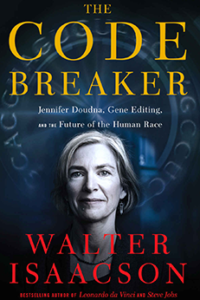

Isaacson traces her academic journey, including the crucial mentoring of her doctoral advisor at Harvard, Jack W. That set her on the path to become a scientist, despite the high school counselor who told her girls didn’t become scientists. She thought it a mystery, and in a way it was as she raced through the book to understand how Watson and Crick unraveled the mystery of the genetic code. Her father, a professor, left a copy of The Double Helix by James Watson on her bed. One is that he profiles Doudna, the lanky blonde growing up in Hilo, Hawaii, and thus a bit of an outcast, who compensated with books. Walter Isaacson does several things simultaneously in this book. It’s possible that someday a gene could be edited into our genome at conception to make us immune to COVID-19 and other diseases. CRISPR has been used for a therapy to cure sickle cell anemia, and in the fight against COVID-19.

In 2018, twins, and another child were born in China with the gene for the receptor that makes one susceptible to HIV edited out, an important protection for a child that has an HIV positive parent. In October 2020, she was awarded, along with Emmanuelle Charpentier, the Nobel Prize in Chemistry for a landmark paper in 2012 that described how to use an enzyme found in bacteria, nicknamed CRISPR, in this case CAS9, to edit genomes, removing and inserting genetic material. Apparently the Nobel Prize committee agreed.

James Watson, co-discoverer of the structure of DNA rated her discovery the most significant after his own. It just may be that her work as a biochemist is as game-changing for humanity as any of the efforts of these others. And Jennifer Doudna? Why has Walter Isaacson chosen to include her among the seminal figures who have been the objects of his books. Henry Kissinger, Steve Jobs, Leonardo da Vinci. Summary: The story of the 2020 Nobel Prize winner in Chemistry, Jennifer Doudna, and the discovery of ways to use CRISPR enzymes to edit genomes, and her subsequent efforts to establish ethical standards for the use of this breakthrough discovery.īenjamin Franklin.


 0 kommentar(er)
0 kommentar(er)
